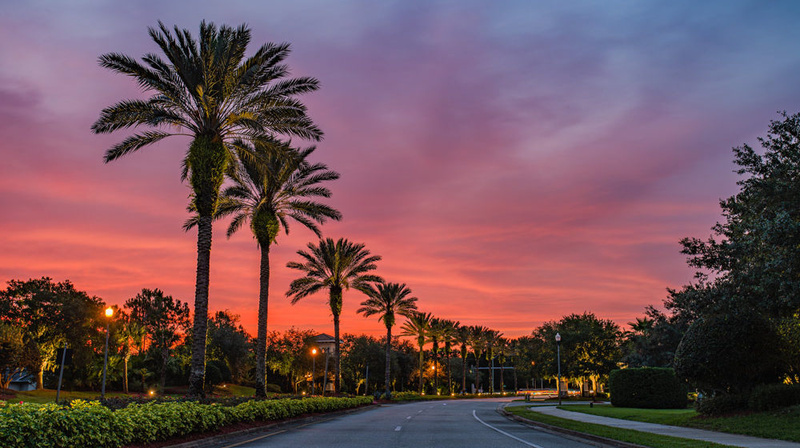
Care for Your Florida Palms
May is the perfect time for palm planting. Once your palms are in the ground, proper care is essential. Groom as needed, water and fertilize regularly, and watch out for infections like lethal bronzing disease. Know the symptoms of LBD and act quickly.
This month is prime palm-planting time. Palm root systems produce a lot of growth and quickly become established. The season has passed for installing bare-root plants, but you’ll find plenty of container-grown or balled-and-burlapped palms at your local nursery or garden center. Getting your palms in the ground is one thing but caring for them is another, so let’s talk palm care: grooming, watering, fertilizing, and disease awareness.
Palm Grooming
If low-hanging palm fronds are preventing good landscape maintenance, remove them by cutting them back to the trunk. In younger palms, shorten the limbs instead of removing them since the foliage is necessary for developing a sturdy trunk.
Watering & Fertilizing Your Palms
Although May is still spring, Floridians know this is a hot month. Regular watering is essential to keep the soil consistently moist. Water newly planted palms daily for about three months, then every other day for the next two months. When you water, fill the berms around the rootball to ensure the soil is thoroughly moistened.
Palm feeding schedules depend on the type of fertilizer you choose. Feed your palms this month and follow the normal fertilizer rate if you’ve chosen a slow-release fertilizer. For normal fertilizers, we recommend a light monthly feeding.
Watch Out for Lethal Bronzing Disease
Given the prevalence of palms in our state, Florida homeowners need to be aware of the variety of diseases that can affect these plants. Lethal bronzing disease (LBD) is a relatively new disease spreading across the state, so it’s important that property owners recognize its symptoms.
Lethal bronzing disease was first observed 16 years ago in Hillsborough County and has since spread to about half of Florida’s counties. LBD is an infection caused by a type of bacteria called phytoplasma. Once a palm is infected, it quickly declines. Unfortunately, LBD has no cure, and infected palms will not recover.
Symptoms of Lethal Bronzing Disease
The first signs of LBD are flower necrosis (blackening) or fruit dropping, which can be challenging to detect if your palm hasn’t produced flowers or fruit. The first sign you may see is leaf discoloration or bronzing. The lowest, oldest leaves first turn a reddish-bronze color and dry out. The disease progresses quickly – usually over two to three months – and while the youngest leaves are still green, the spear leaf browns, dries, and dies, indicating the death of the palm’s heart, the apical meristem. The death of the spear leaf is the distinguishing feature of LBD.
Stop the Spread of LBD
The LBD bacteria lives in a palm’s sap-producing tissue and is spread by insects that feed on the sap. For this reason, it’s crucial to remove affected palms as soon as possible to prevent the spread of the infection to neighboring palms. Contact your county’s Extension office if you suspect one or more of your palms has lethal bronzing disease. They’ll test the suspected palm and, if the test is positive, the neighboring palms. Since there is no cure for LBD, immediately remove any palms that test positive for the infection, even if they have yet to show symptoms. Neighboring palms that are negative for LBD can be treated with an antibiotic to prevent the contraction of the disease.